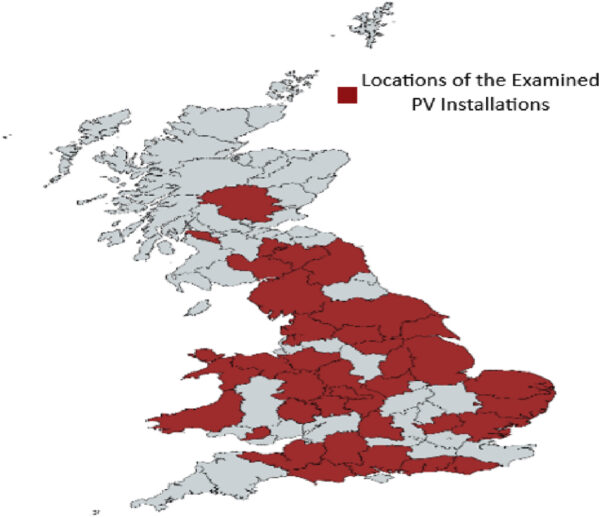Researchers from the University of York have conducted an electroluminescence (EL) analysis on 85,000 PV modules across 167 installations located in the United Kingdom over a 9-year period and have found an increasing presence of complex and edge-ribbon cracks in recent installations.
The scientists explained that the novelty of their approach consisted of using EL testing exclusively under nocturnal conditions, which they said improves image clarity and resolution, as well as the accuracy of defect detection. They also included a temporal degradation analysis from 2015 to 2023, which they claim offers “unprecedented” insights into the long-term performance and degradation patterns of PV systems.
The group categorized defects into line cracks, complex cracks, edge-ribbon cracks, and potential-induced degradation (PID). It used Digital EL cameras to take high-resolution images of the PV modules. “To facilitate the EL imaging process, the PV module was connected to a power supply, generating a biased current,” it further explained. “This setup is essential for inducing the electroluminescence effect in the solar modules, thereby revealing defects upon imaging.”
The academics said this setup results in minimized ambient light interference, enhanced image resolution and contrast, improved sensitivity to electroluminescence, consistent imaging conditions, reduced thermal stress on equipment, and optimal conditions for current induction.

Image: University of York, Renewable Energy, Common License CC BY 4.0
The tested solar modules had an operational field experience ranging from 2 to 9 years, with 41,000 featuring a 72-cell configuration and the remainder having a 60-cell design. Overall, the inspection analyzed 5,592,000 solar cells. “We did not collect IV curves for all 85,000 PV modules due to the significant costs associated with such extensive data acquisition,” the academics specified.
The EL analysis showed an increasing presence of edge ribbon cracks, which occur at or near the edges of the solar cells, particularly where the cell is soldered to the ribbon. These defects are commonly due to stress during module fabrication, thermal expansion, or mechanical load stresses.
“One of the most notable findings is the dramatic rise in edge ribbon cracks in PV systems installed post-2022,” the research team emphasized. “These defects, which significantly impair module performance, have increased from 7.89% in earlier installations to 28.23% in more recent ones. This trend suggests that newer manufacturing or installation techniques may be introducing mechanical stresses that lead to this type of defect.”
However, the analysis also showed that the degradation rates of PV systems remained below 1% per year, with the majority of PV systems being predicted to retain over 80% of their original performance after 25 years. “This emphasizes the long-term durability of PV systems, even as they experience a gradual decline in efficiency,” they added.
Their findings are available in the paper “Broad-Scale Electroluminescence Analysis of 5 Million+ Photovoltaic Cells for Defect Detection and Degradation Assessment,” published in Renewable Energy.
Looking forward, the researchers said they want to expand the dataset, integrate advanced machine learning techniques, and explore the regional variability in PV degradation rates, as well as develop improved monitoring strategies, predictive models, and targeted maintenance practices.
This content is protected by copyright and may not be reused. If you want to cooperate with us and would like to reuse some of our content, please contact: editors@pv-magazine.com.




By submitting this form you agree to pv magazine using your data for the purposes of publishing your comment.
Your personal data will only be disclosed or otherwise transmitted to third parties for the purposes of spam filtering or if this is necessary for technical maintenance of the website. Any other transfer to third parties will not take place unless this is justified on the basis of applicable data protection regulations or if pv magazine is legally obliged to do so.
You may revoke this consent at any time with effect for the future, in which case your personal data will be deleted immediately. Otherwise, your data will be deleted if pv magazine has processed your request or the purpose of data storage is fulfilled.
Further information on data privacy can be found in our Data Protection Policy.